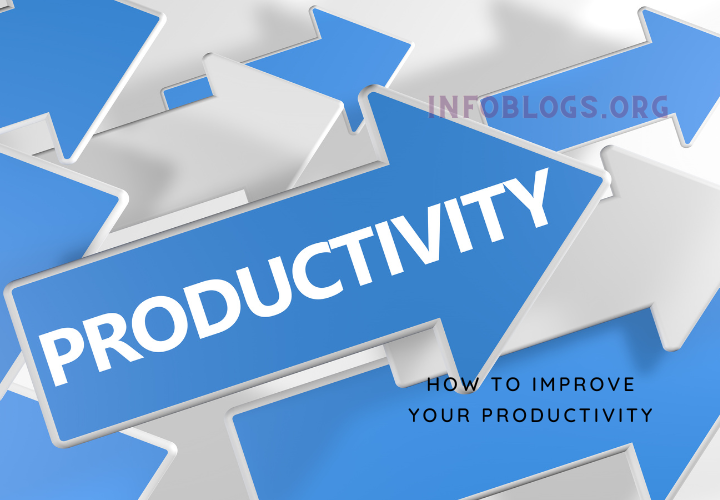Do you dream to improve your productivity but feel like the days pass by quickly and yet you can’t seem to get anything accomplished? You’re not alone. Improving productivity is a challenge faced by many people, but it doesn’t have to be an insurmountable task. With the right tools and strategies, anyone can become more productive. The article “How to Improve Your Productivity” offers helpful tips on how to make your time more efficient. It begins with understanding what productivity means for your specific goals, including creating a plan for achieving those objectives. It then explains how setting realistic expectations can help you stay motivated as well as how breaking down tasks into smaller chunks of time makes completing them easier and faster.
Step One: Time Management
Time management is essential to increasing productivity, and it’s the first step you should take when looking to improve your work habits. Taking control of the time available can help focus efforts by allocating tasks into realistic chunks and managing distractions. By setting aside specific times for specific activities, you can create a manageable schedule that makes the most of your working hours and ensures everything gets done efficiently.
Creating a timeline or plan of action that outlines each task's importance and due date is an effective way to keep on top of things. This will enable you to prioritize important deadlines over anything else, meaning nothing slips through the cracks as well as allowing more flexibility with urgent tasks that might arise. Another great way to stay organized is by breaking down larger projects into smaller goals – this will make them easier to track progress on, preventing any feeling of overwhelm or becoming stalled in one area.
Step Two: Setting Goals
If you are looking to improve your productivity, the second step in the process is to set goals. Setting goals helps you stay motivated and organized as well as providing a clear direction for what needs to be done and when. Having specific goals also allows you to track your progress and measure success.
When setting goals, it's important to make them realistic and achievable; breaking large projects down into smaller components can help with this. Additionally, include both short-term and long-term objectives so that there is an overall view of where you want to be at the end of each day or week. To further enhance motivation, consider rewarding yourself for meeting targets or reaching milestones along the way. Visualizing yourself achieving these goals can also help maintain focus on what needs to be done next.
Step Three: Prioritize Tasks
If you're looking to improve your productivity, the third step is to prioritize your tasks. This can be a daunting and time-consuming process, but it's essential in order to maximize efficiency and reach your goals.
Start by making a list of all the tasks that need to be done, both big and small. You may find it helpful to break them down into smaller components or sub-tasks if necessary. Once all of the items are written down, consider which ones are most important for achieving your desired outcome. Take into account factors such as deadlines and urgency, as well as personal preferences — if there's something you don't enjoy doing but must get done anyway, try to push it further down on the list so that it doesn't become a roadblock in completing other tasks more quickly.
Step Four: Find Motivation
Finding motivation is the fourth step in learning how to improve your productivity. With a good understanding of how to set achievable goals, create an environment that encourages productivity, and incorporate breaks into your routine, it’s time to make sure you have enough motivation to stick with it.
It can be hard to stay motivated if you’re constantly hitting roadblocks or facing setbacks. Find ways to challenge yourself and reward yourself for sticking with a task until completion. Create short-term goals that are easy to reach so that you can feel like you’re making progress towards larger achievements. Having something tangible as a reminder of smaller successes can help keep the bigger picture in sight when times get tough or the going gets slow. Set up incentives such as treats or rewards for completing tasks on time so that you have something positive motivating your actions and pushing you forward.
Step Five: Eliminate Distractions
In order to maximize your productivity, you need to minimize distractions. Step five of improving your productivity is eliminating distractions from both your workspace and life. This includes anything that can potentially disrupt your focus or take away time resources such as social media, phone calls, emails, etc.
Start by evaluating what types of distractions might be preventing you from reaching peak productivity levels. Next, create a plan to avoid these distractions in the future both online and offline. For example, if you spend too much time scrolling through social media posts during the day try setting aside specific times each week when you allow yourself a break to check them instead. Additionally, set an auto-response on emails informing people that you are busy and only checking messages at certain times throughout the day.
Conclusion: Become More Productive
The conclusion to the article ‘How to Improve Your Productivity' is simple: become more productive by making small changes in your daily routine. By increasing productivity, you can get more done each day and be better equipped for success at work or school. Here are some tips to help you do just that.
First, focus on one task at a time rather than multitasking; this will help you stay focused and avoid distractions. Second, create a daily schedule and stick to it; make sure it includes time for breaks throughout the day so that you don't become overwhelmed with too much work. Finally, set realistic goals and try to reach them step-by-step; this will help motivate you and keep your motivation levels high.
By following these steps and making small changes in your everyday routine, you can greatly improve your productivity level!


